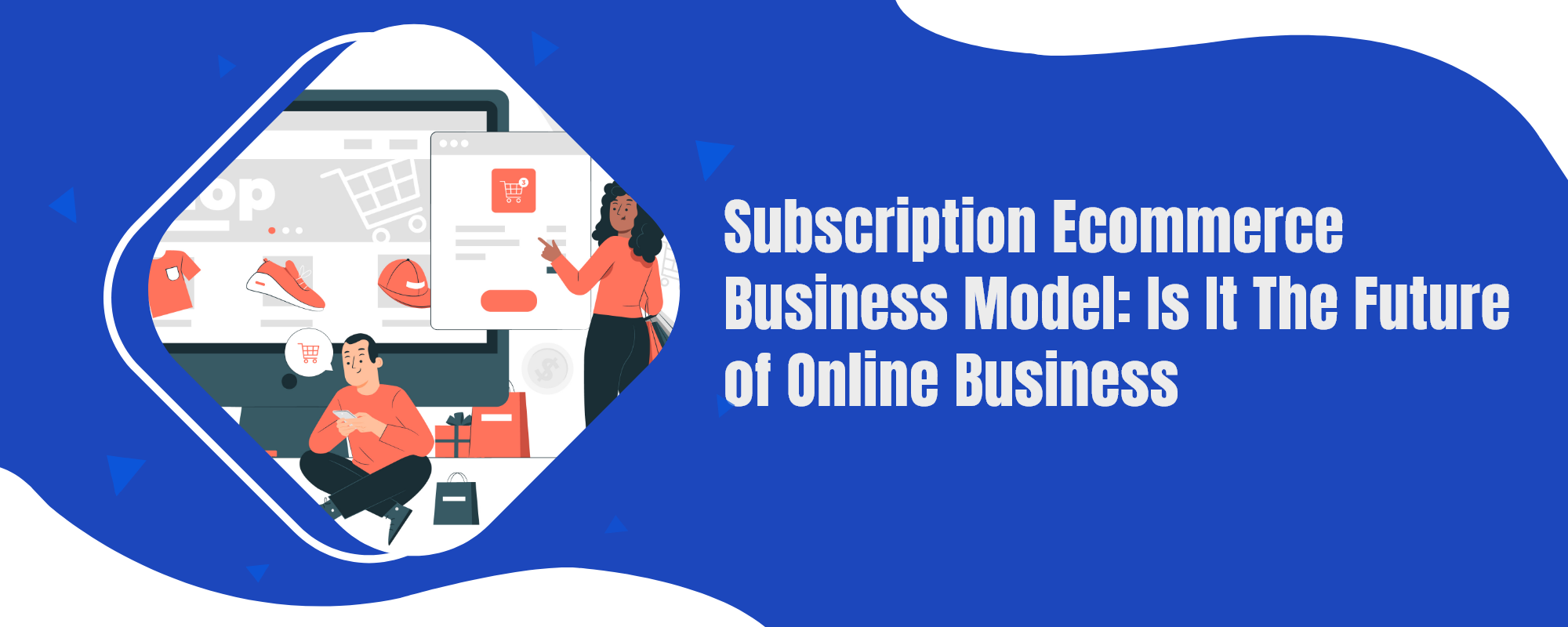The demand for guidance on making the shift from a proprietary to a subscription ecommerce business model has increased as more organizations consider making the change. Currently, more than half of all internet consumers are part of an e-commerce subscription service.
Successful businesses are always those who recognize emerging trends and adapt their operations accordingly. If you’re thinking of starting your own subscription service for your store, now is the time to do it because this market is expected to grow to $473 billion by 2025.
What is a Subscription Ecommerce Business Model?
A subscription-based pricing model is a type of e-commerce pricing strategy in which a client or organization commits to paying a fixed sum over a certain period of time to access a service. Most customers sign up for a monthly or annual plan to use the service.
Customers in a subscription business model are required to make an initial investment before using the service for any length of time. Subscription fees are typically calculated on a sliding scale depending on the duration of the commitment. In most cases, the price of membership drops as its duration increases.

Different types of Subscription Ecommerce Business Models
There are three different types of Subscription e-commerce business models:
Access Business Model
Subscribers, much like members of warehouse clubs, pay a recurring membership fee to gain access to the company’s inventory. Long-term discounts, to which subscribers have access exclusively, are the main selling point. From the cosmetics industry to the food industry, there are e-commerce companies that use an access business model.
With this business strategy, you may sell several products to your customers for the price of one membership. In order to provide real value to your clients, though, you’ll need to keep an eye on the metrics and make adjustments as needed. The online organic food and snack retailers Thrive Market and Nature Box are two examples of businesses that have found success with an access-based business model.
Replenishment Business Model
Through a replenishment subscription, consumers may regularly stock up on the consumables they rely on the most. Customers benefit from automatic, discounted essentials deliveries on a set schedule. As its name implies, this model requires periodic restocking of the products. Toiletries, vitamins, groceries, pet food, and similar convenience items are excellent candidates for this model.
This approach outperforms the competition in terms of conversion and customer retention because of the inherent value of the offered items. However, in order to turn a profit, you’ll need to operate on a large scale so that you can afford to provide deep discounts to attract customers to such a subscription plan.
Curated Subscription Model
Personalized product collections tailored to each subscriber’s preferences are the focus of curated subscription services. These companies are also known as subscription box services. The fashion and cosmetics industries have done the most to popularise this model. Nevertheless, a curated subscription can be effective for a variety of items across a number of businesses. Even day-to-day necessities like food and toilet paper have become more popular due to the pandemic.
Most people who sign up for these boxes want to receive recommendations tailored specifically to their interests; therefore, they are willing to spend more for high-quality items. Because of this, the potential for gain is substantial with proper implementation. On the other hand, it is more expensive to attract and keep customers because significant investment is necessary for marketing, branding, packaging, and other aspects of the customer experience.
The Benefits of Subscription Ecommerce Business Model
Easy for building customer relationships
With a subscription in place, you can rest assured that your clients will remain loyal for the duration of this period (as long as you continue to supply them with value-added products and services). In the long run, you’ll be able to put more money into expanding your business because you won’t have to spend as much on customer acquisition and retention.
Better sales and inventory predictions
If you run a subscription ecommerce business model service, you’ll have a far easier time predicting your future sales and earnings. There will be customers that sign up for your services months in advance; these customers will remain loyal for at least the duration of their subscription.
Second, you’ll have a better idea of how long a certain subscriber will stay on board than you would if you were selling one-off products or services. It will be easier to predict how much stock you need to keep on hand at any given time, as many of your customers will likely prepay for several months of your services through a subscription.
Read more: Understanding eCommerce Business Model: A Beginner’s Guide
More customer engagement
Subscribers to your ongoing services provide you with a variety of opportunities to engage with them during the course of the term. Engagement opportunities like these are readily apparent for businesses that provide monthly subscriptions (like Netflix).
However, even if you offer a more niche service, you should still interact with your members in some form throughout the subscription period.
Increase in customer retention
Maintaining your customers over time will be easier if you provide a worthwhile subscription service. Customers pay for these services on the assumption that they will continue to benefit from using them over time. When a business gets to know a consumer on a deeper level through repeated interactions, it can tailor its recommendations to that person’s preferences even more precisely, which helps in customer retention.
How to start a Subscription Ecommerce Business?
Find your niche
Finding the proper niche for your subscription business is the first step toward a successful launch. There are primarily three questions you must answer to accomplish this: Which type of buyer best represents your target market? What specific market are you trying to appeal to? Find out who the current players are and figure out how you can differentiate yourself from them.
Being able to differentiate yourself from the competition and grow a successful subscription-based business relies on knowing what sets you apart and then effectively marketing that uniqueness.
Choose the right subscription ecommerce business model
For example, providing a service geared towards replenishment is the obvious choice if your company sells consumable goods that its target customers need on a frequent basis. Nonetheless, the above-mentioned criteria rely on the individual’s discretion.
So, if you know exactly who you’re targeting, what problems you’re solving, and what makes your service stand out from the competition, you can confidently choose the type of service to offer before launching your venture.
Develop an app or website for the ecommerce store
Your customers will interact with you through a mobile app or website. Customers who have interacted with an app or website before making a purchase will feel increasingly more at ease during the transactions. Subscription ecommerce business model based technologies can be hard to come by, therefore it’s best to choose a versatile, ecommerce-ready framework to develop your app and save development time and effort.
Advertise on social media
Subscription ecommerce businesses need aggressive marketing methods to thrive. If you want to see a rise in sales, you need to get creative with your online advertising on Google, Facebook, and other sites. Using social validation strategies like comments, reviews, recommendations, and testimonials can help you gain the trust of targeted users.








